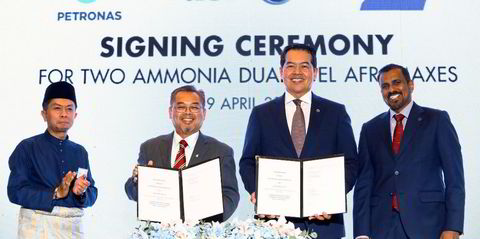The scale of the shrinking global tanker fleet is an alarming development that could lead to future bottlenecks in the energy supply chain, Frontline chief executive Lars Barstad warned on Thursday.
A historically low tanker orderbook combined with high numbers of ageing suezmax and VLCCs leaving the market in coming years indicates “early signs” of future problems in the global movement of oil.
The orderbook for tankers stands at levels last seen in around 2000, when the oil market was much smaller, said Barstad.
“This is an alarming development. … We’re starting to see the early signs that tankers could become a bottleneck in the energy logistical chain,” he said.
“Not every country in the world is blessed with oil. There’s also an asymmetrical relationship between population growth and oil resources.
“So this transportation need is actually real. So let’s see how this develops.”
He said 27 VLCCs had been delivered this year into the global fleet with 41 more on the orderbook.
But 81 were due to pass 20 years of age and another 33 next year, according to Frontline’s presentation.
TradeWinds reported on Thursday that the longest break in VLCC orders for a quarter of a century came to an end this week when Japan’s Mitsui OSK Lines (MOL) ordered two new vessels at shipyards in China.
The order came after a year-long drought of orders for VLCC and suezmax newbuildings, said Barstad.
“In order to get a significant change to this picture we need far more,” he said.
Shipowners have been put off by high newbuilding rates and indecision over which fuel to choose, Bimco chief shipping analyst Niels Rasmussen said last month.
It left the orderbook to fleet ratio at 5.1% for both crude and product tankers, the lowest since 1996, said the industry body.
Tight tanker supply, record US crude exports and longer voyages caused by the reshuffling of trade routes after sanctions imposed on Russia are fuelling rising tanker rates.
LR2 boon
That contributed to Frontline’s fleet of LR2 tankers achieving the company’s highest quarterly time-charter equivalent rates in the second quarter of 2022.
The company said the market was at a pivotal point with supply and demand for oil and product transport tightening leading to a cyclical upturn for tankers.






